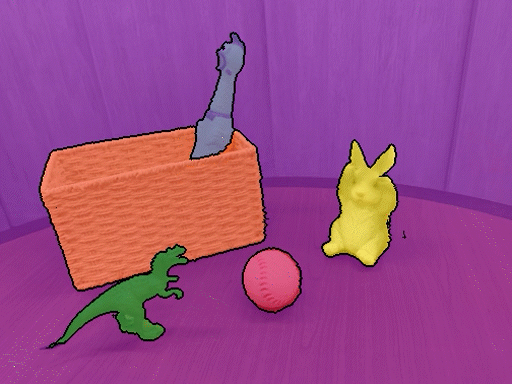Weakly Supervised 3D Open-vocabulary Segmentation
Open-vocabulary segmentation of 3D scenes is a fundamental function of human perception and thus a crucial objective in computer vision research. However, this task is heavily impeded by the lack of large-scale and diverse 3D open-vocabulary segmentation datasets for training robust and generalizable models. Distilling knowledge from pre-trained 2D open-vocabulary segmentation models helps but it compromises the open-vocabulary feature as the 2D models are mostly finetuned with close-vocabulary datasets. We tackle the challenges in 3D open-vocabulary segmentation by exploiting pre-trained foundation models CLIP and DINO in a weakly supervised manner. Specifically, given only the open-vocabulary text descriptions of the objects in a scene, we distill the open-vocabulary multimodal knowledge and object reasoning capability of CLIP and DINO into a neural radiance field (NeRF), which effectively lifts 2D features into view-consistent 3D segmentation. A notable aspect of our approach is that it does not require any manual segmentation annotations for either the foundation models or the distillation process. Extensive experiments show that our method even outperforms fully supervised models trained with segmentation annotations in certain scenes, suggesting that 3D open-vocabulary segmentation can be effectively learned from 2D images and text-image pairs. Code is available at \url{https://github.com/Kunhao-Liu/3D-OVS}.
PDF Abstract NeurIPS 2023 PDF NeurIPS 2023 Abstract

